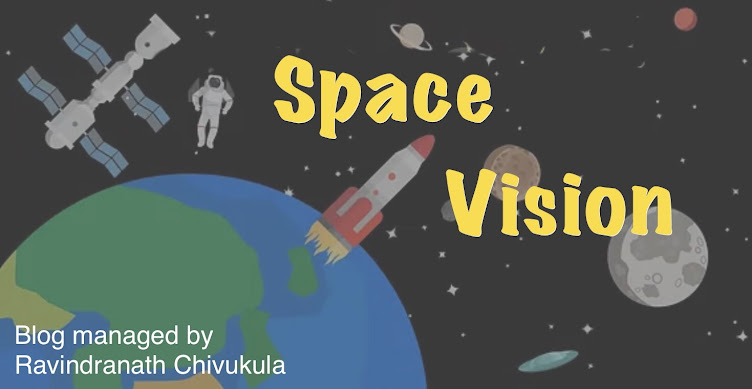I am sorry for not posting news for the past 2 months due to preoccupation.
- Ravindranath, C
-----------------------------------------------------------------------------
- Ravindranath, C
-----------------------------------------------------------------------------
Price, reliability, and other challenges facing the launch industry
According to
conventional wisdom, commercial customers of launch services care more about
launch prices than those in government. Commercial users, after all, are trying
to close a business case and generate as much profit as possible. Government
users, on the other hand, are concerned about getting their payloads—often
very expensive and performing critical missions—launched on schedule and
safely, and have shown a willingness to help financially support their
nations’ own launch systems.
That conventional
wisdom, if it was ever totally accurate, is showing signs of breaking down.
Commercial customers, particularly in the core market of geosynchronous
communications satellites, have been less price sensitive than what some might
expect, and are now expressing new concerns about the reliability of some
vehicles. Government customers, meanwhile, are showing new sensitivity to price
in this new era of constrained budgets, and are looking to competition from new
entrants to help lower their costs. Full
Story
ISRO tests cryogenic upper stage
ISRO successfully tested a cryogenic engine powered by liquid hydrogen and
liquid oxygen, intended for the upper stage of its GSLV launch vehicle on
March 27, 2013, at Mahendragiri, clearing the way for the next GSLV launch
later this year. The test tokk place in a test stand designed to simulate the
low pressure of the upper atmosphere . The test confirmed the performance of
the engine, according to ISRO. The engine will be used on the upper stage of
the next Geosynchronous Satellite Launch Vehicle (GSLV), slated to lift off in
the latter half of July carrying a communications satellite. A previous GSLV
flight using an Indian-developed cryogenic upper stage engine failed in 2010
because of a problem with that engine.
Proton
returns to flight, launches Mexican satellite
The Proton rocket returned to flight on March 27, 2013 with the successful
launch of a Mexican satellite. The Proton M lifted off from the Baikonur
Cosmodrome in Kazakhstan at 3:07 pm EDT Tuesday (1907 GMT Tuesday, 1:07 am
local time Wednesday) carrying the Satmex 8 satellite. The rocket's Breeze M
upper stage released the satellite into geosynchronous transfer orbit nine
hours and 13 minutes after liftoff. Satmex 8, a Space Systems/Loral 1300 model
spacecraft, weighed 5,474 kilograms at launch and carries a payload of 24
C-band and 40 Ku-band transponders. Mexican satellite operator Satmex will use
the spacecraft at 116.8 degrees west in GEO, replacing the existing Satmex 5
satellite. The launch was the first for the Proton since a December mission
that placed a communications satellite into a lower-than-planned orbit when
the upper stage shut down prematurely.
Related
Links:
Soyuz launches crew on
"express" flight to ISS
A Soyuz rocket launched a spacecraft carrying three people making what is
planned to be the shortest flight to the International Space Station. The
Soyuz rocket carrying the Soyuz TMA-08M spacecraft lifted off from the
Baikonur Cosmodrome in Kazakhstan at 4:43 pm EDT (2043 GMT) on March 28, 2013.
The spacecraft, carrying American astronaut Chris Cassidy and Russian
cosmonauts Pavel Vinogradov and Alexander Misurkin, is making the first
"express" trip to the ISS, a journey that normally takes two days.
The Soyuz is scheduled to dock with the station's Poisk module at 10:32 pm EDT
Thursday (0232 GMT Friday), or less than six hours after liftoff. The same
fast approach to the station has been used by Progress cargo spacecraft going
to the ISS, but never before by a Soyuz spacecraft traveling to the station.
Related Links:
SpaceX brings home Dragon
with 2,700 pounds of cargo
A suite of
refrigerated biomedical research samples and other equipment traveled from the
International Space Station back to Earth on Tuesday, nestled inside a
commercial Dragon spaceship completing a 25-day resupply flight to the orbiting
scientific laboratory. FULL
STORY
Fourth
launch in four months for Atlas 5
Launching.
Just launching. That's been the mantra for the United Launch Alliance Atlas 5
rocket program, which successfully completed its fourth flight in four months on
Tuesday by boosting a surveillance satellite into orbit for the Pentagon. FULL
STORY
How
salty is that seawater? Ask the Aquarius satellite
Satellite
measures ocean salinity to study circulation and the water cycle.
One
of the newest members of the Earth-observing club is Aquarius (along
with its friends aboard the SAC-D satellite). Launched on
June 20, 2011, the satellite is a collaborative effort between the US and
Argentina. Its job? To map surface ocean salinity around the globe and improve
our understanding of ocean circulation and the hydrologic cycle. The Aquarius
instrument consists of two main components. The actual salinity measurement is
made by a microwave radiometer that surveys the radiation emitted by the ocean
surface. Because salinity affects the electrical conductivity of ocean water, it
changes the microwave emissions perceptibly.If the sea surface was perfectly
smooth and calm, that would be pretty straightforward. But because waves affect
the way that the radiation is emitted, it’s necessary to account for the
roughness of the sea. This is accomplished by using a radar scatterometer that
bounces energy off the surface and measures how much returns directly to the
satellite. Full
Story
